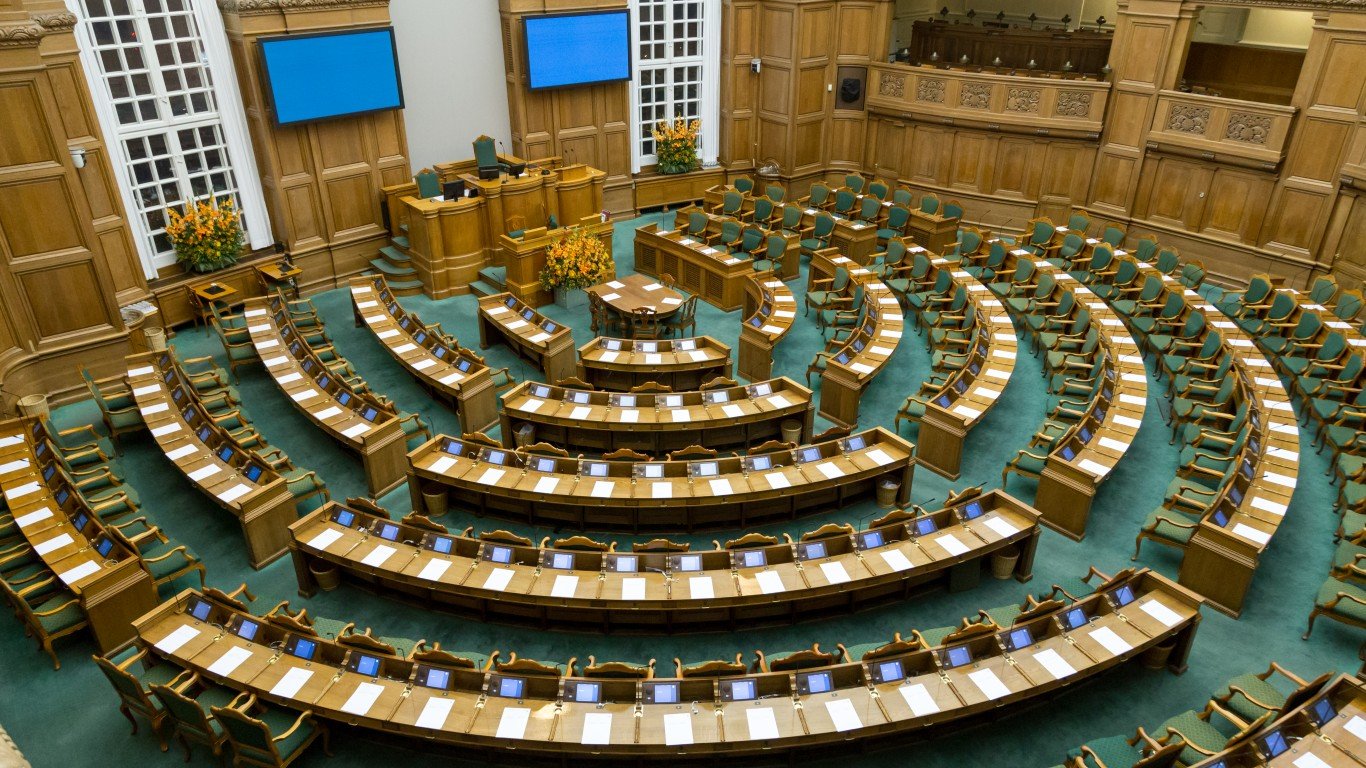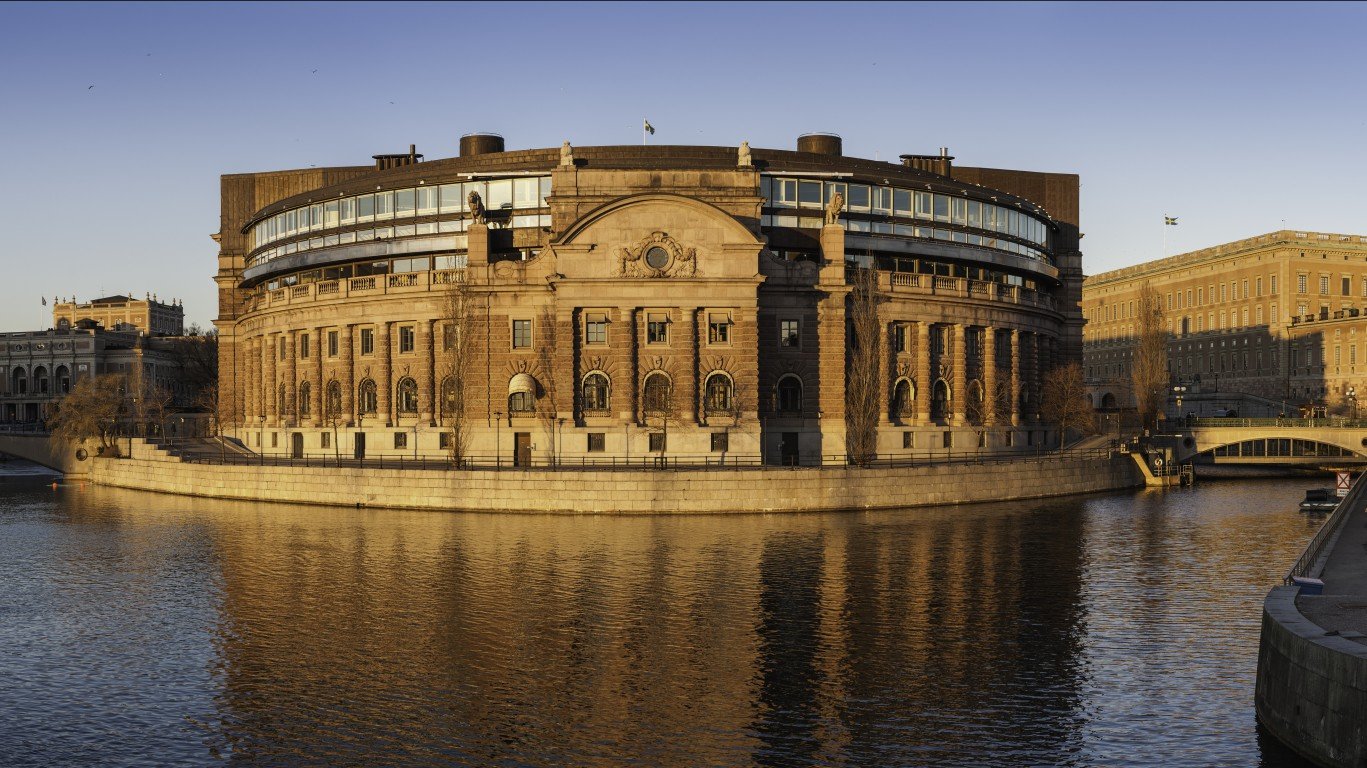
5. Denmark
> Overall index score: 71.1
> Vulnerability score: 0.35
> Best dimension: Infrastructure
> Readiness score: 0.78
> Best readiness dimension: Governance
> GDP per capita: $55,820 – #10 highest out of 182 countries
> Population: 5,831,404 – #111 highest out of 182 countries
Like its Scandinavian neighbors in this frigid northern region of Europe, Denmark will experience wetter conditions that will increase flood risks. Increased precipitation poses a risk to the more populated coastal areas of the country. Large storms in 2003, 2007, and 2013, showed that the country’s sewerage and stormwater systems are unable to handle large amounts of water. But Demark has identified 10 flood-prone areas and in 2012 implemented a plan to improve urban drainage systems.

4. Sweden
> Overall index score: 71.3
> Vulnerability score: 0.30
> Best dimension: Human Habitat
> Readiness score: 0.72
> Best readiness dimension: Governance
> GDP per capita: $50,925 – #15 highest out of 182 countries
> Population: 10,353,442 – #86 highest out of 182 countries
Sweden will have warmer and wetter weather as the Earth warms. Precipitation has increased, especially in the summer, and is forecast to be 40% higher toward the end of this century compared to the latter half of last century. While some parts of the country will experience more drought conditions, the biggest risk of climate change to Sweden is from floods. In 2018, Sweden implemented a national plan to improve its climate resilience.

3. Switzerland
> Overall index score: 71.9
> Vulnerability score: 0.26
> Best dimension: Human Habitat
> Readiness score: 0.69
> Best readiness dimension: Governance
> GDP per capita: $68,755 – #5 highest out of 182 countries
> Population: 8,636,561 – #98 highest out of 182 countries
Switzerland’s average temperature is rising as much as three times faster than the global average, and winter precipitation is expected to increase significantly, manifesting as rain instead of snow and increasing the risk of cold-weather flooding. But like other small and affluent countries, Switzerland’s climate change challenges are among the most manageable in the world. The country has implemented an action plan to deal with rising energy demand and decreased hydroelectric power during the times of the year that are getting warmer and drier.

2. Finland
> Overall index score: 72.0
> Vulnerability score: 0.31
> Best dimension: Human Habitat
> Readiness score: 0.75
> Best readiness dimension: Governance
> GDP per capita: $47,397 – #18 highest out of 182 countries
> Population: 5,529,543 – #113 highest out of 182 countries
A fourth of Finland is situated in the Arctic Circle, and the country is highly susceptible to the effects of the world’s melting ice caps. Extreme weather events will increase the risk of floods along the country’s coastline. But rising temperatures will also have some advantageous effects in extreme northern climates by reducing demand for heating and increasing forest growth and crop yields. Finland was one of the first countries to adopt a national strategy to confront climate change challenges, in 2005.

1. Norway
> Overall index score: 75.4
> Vulnerability score: 0.26
> Best dimension: Human Habitat
> Readiness score: 0.77
> Best readiness dimension: Governance
> GDP per capita: $63,548 – #6 highest out of 182 countries
> Population: 5,379,475 – #116 highest out of 182 countries
Norway will experience more summertime heatwaves, warmer winters, and heavier rainfalls due to global warming. Temperatures in the Arctic north of the country will increase faster then in the south, exacerbating flood risks. But this small and affluent Scandinavian country is one of the most equipped to confront the challenges of climate change, thanks in part to economic support from the country’s oil and gas sector, which accounts for 15% of Norway’s GDP and is a major contributor to the country’s sovereign wealth fund, one of the world’s largest.

 24/7 Tempo
24/7 Tempo




